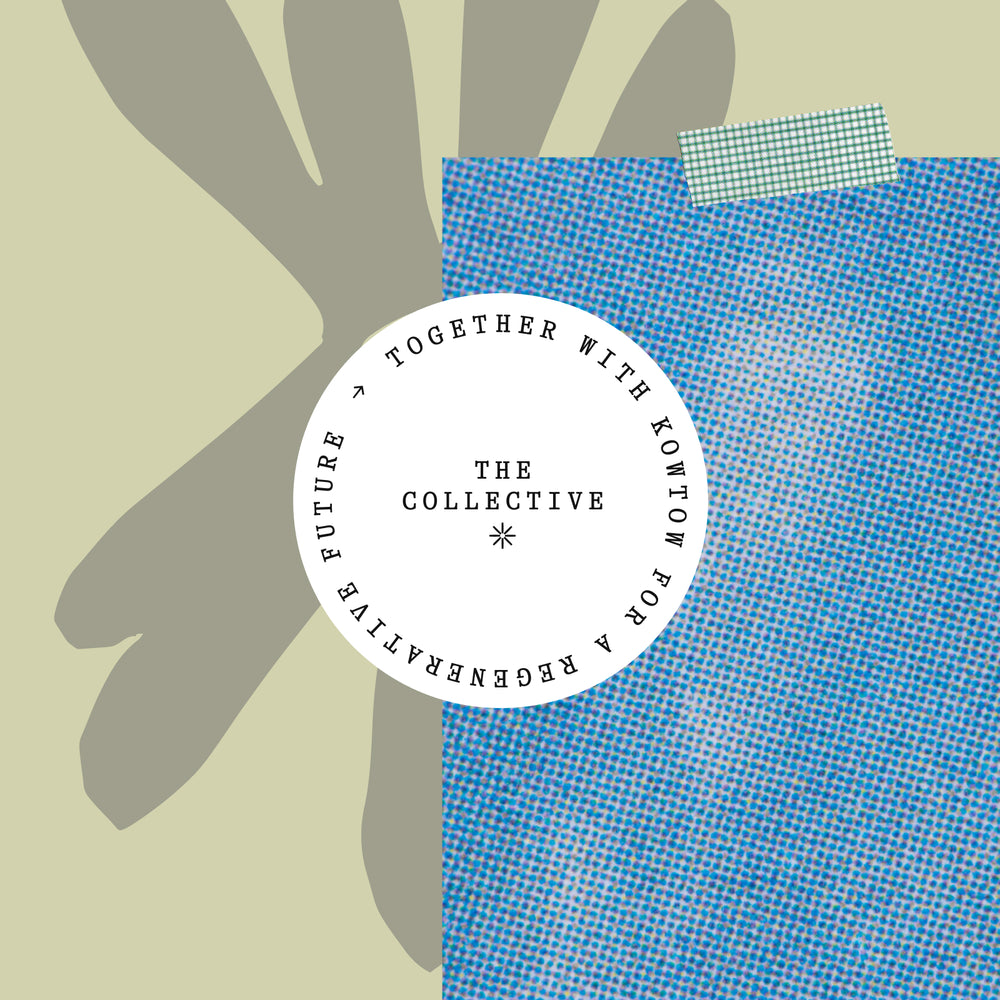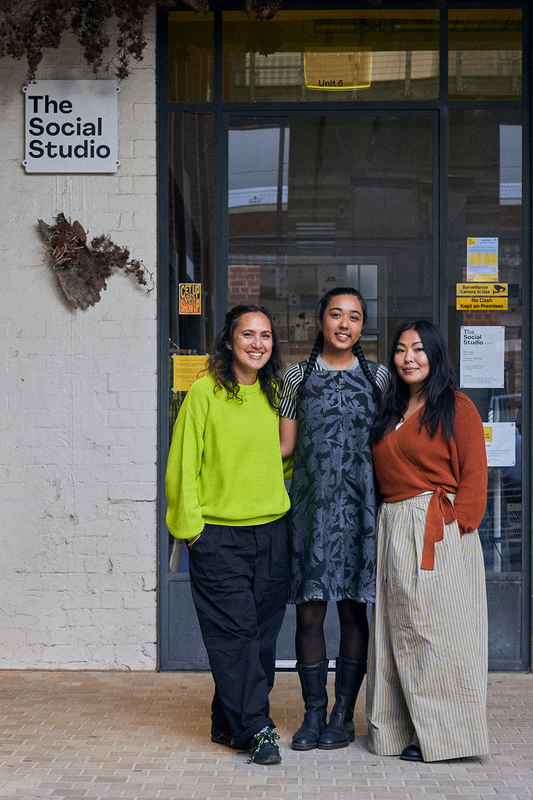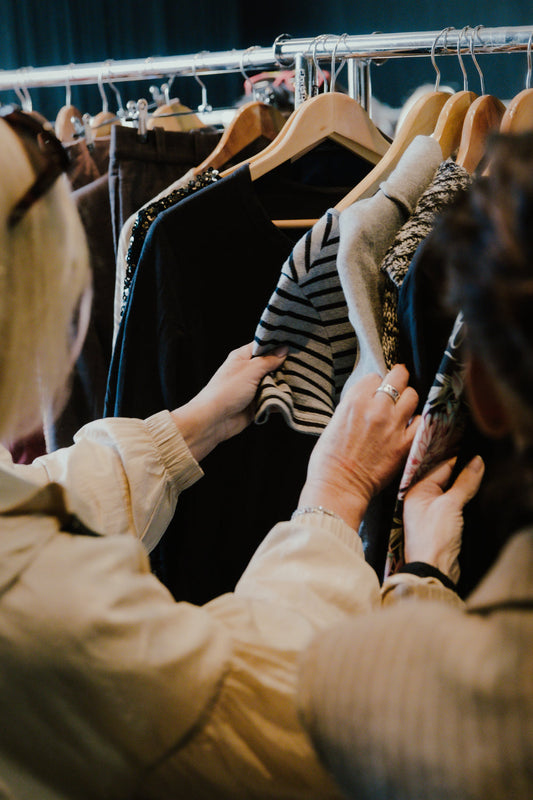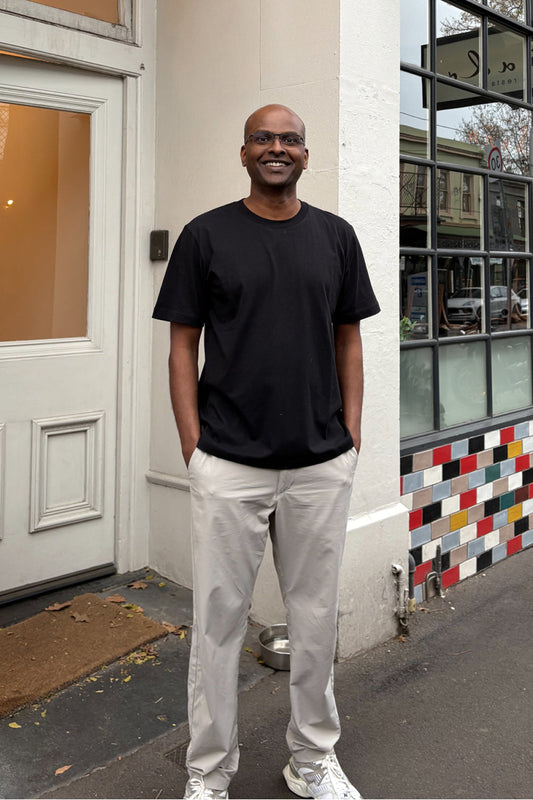
Lucianne Tonti is a sustainable fashion journalist who we were happily introduced to last year via her book, Sundressed.
We spoke to Lucianne to break down what regenerative agriculture really means, the benefit of wearing natural fibres and her approach to getting dressed.
Lucianne, your book, Sundressed has been a favourite in the Kowtow Library since its release. What inspired you to put your years of research onto the page?
I started working on it not long after the Black Summer fires - it was so clear to me then that we needed to start looking for solutions to fashion's carbon footprint that did more than mitigate harm and that could actively regenerate and restore landscapes. The book came out of early conversations with regenerative farmers who were so passionate about their farms and from seeing the incredible work they were doing.

We hear the term regenerative agriculture so often in the sustainable fashion industry, but what does it really mean and why is it so important?
Regenerative agriculture is kind of like the next generation of organic farming. In fashion we can use it to grow cotton, wool, cashmere, silk, flax (linen) and hemp in ways that restore ecosystems, biodiversity and water cycles to landscapes - which makes them more resilient to extreme weather events like floods, droughts and fires. The big techniques are: planting lots of different species, spraying no chemical inputs, not tilling and not leaving any bare ground. All these things create healthier soils and healthy soils are one of the safest places to store carbon. Plus when you farm this way you get stronger, softer, finer fibres.
What has deep diving into natural fibres and regenerative agriculture taught you as a consumer?
To always ask where the fibres were farmed!
We love our chosen mono-fibre, what have you learnt on organic cotton in your research?
I love cotton too! It's such an incredible material - which is why we wear it so much! I think most of the time we are touching something made from cotton - which is really interesting. Growing cotton without chemicals is so different from industrial cotton farming - where the cotton is planted on enormous stretches of land where often you can't see any trees. Organic cotton is grown on small farms alongside other plants like chickpeas, mung beans and spinach. Since you aren't spraying synthetic fertilisers you need to have animals like cows or chickens running around to provide natural fertilisers. That sounds like a really happy farm to me.

Does learning more about the depths of the fashion industry give you hope for a circular, regenerative future?
The best part about doing this work is talking to really smart people who are working on incredibly exciting solutions - like farmers who have used regenerative agriculture to bring their landscapes back to life. But until the fashion industry accepts that we have to stop using polyester and nylon because they are made from fossil fuels, I won't feel hopeful. Those materials make up a significant portion of fashion's carbon emissions and without them we wouldn't have fast fashion and overconsumption.
What inspires the way you dress?
I love anything oversized, simple and a little masculine.
We know that sustainability is front of mind for you when shopping, how do you decide what pieces to take home?
I'm doing Rule of 5 this year - the wardrobe challenge that says to be on track for 1.5 degrees of warming people in wealthy countries need to only buy five new items of clothes every year (not including underwear and socks). That means I've been buying more vintage and it's really shown me how you can basically source anything you want second hand (the last item I bought was a pair of Jil Sander ballet flats on Vestiaire Collective that hadn't ever been worn). But basically I'm looking for things that are classic, high quality, made from natural fibres that are so durable, beautiful and comfortable I'll wear them for years and years.
If you could sum up the importance of shopping/wearing natural fibres, what would you say?
Wear to start! Natural fibres are better in function and form on the body. Not only are they more beautiful but they are also so much easier to care for than synthetic materials because they don't hold onto stains and smells. Plus they thermoregulate (keep you hot or cool) so you are always comfortable - which is so important. Polyester and nylon are always dyed with nasty chemicals that are very bad for our health. Ultimately though, I think we have to consider natural fibres a true gift from nature - cotton grows like a flower and comes off the plant bright white and fluffy and ready to be spun. When you see a merino fleece for the first time, it's incredible how fine and springy the fibres are (once they've been washed). Linen comes from the inside of a woody stalk that grows in a field. Silk comes from the cocoon of a silkworm. It really is incredible that these things are the product of nature and we're so lucky we get to wear them.




